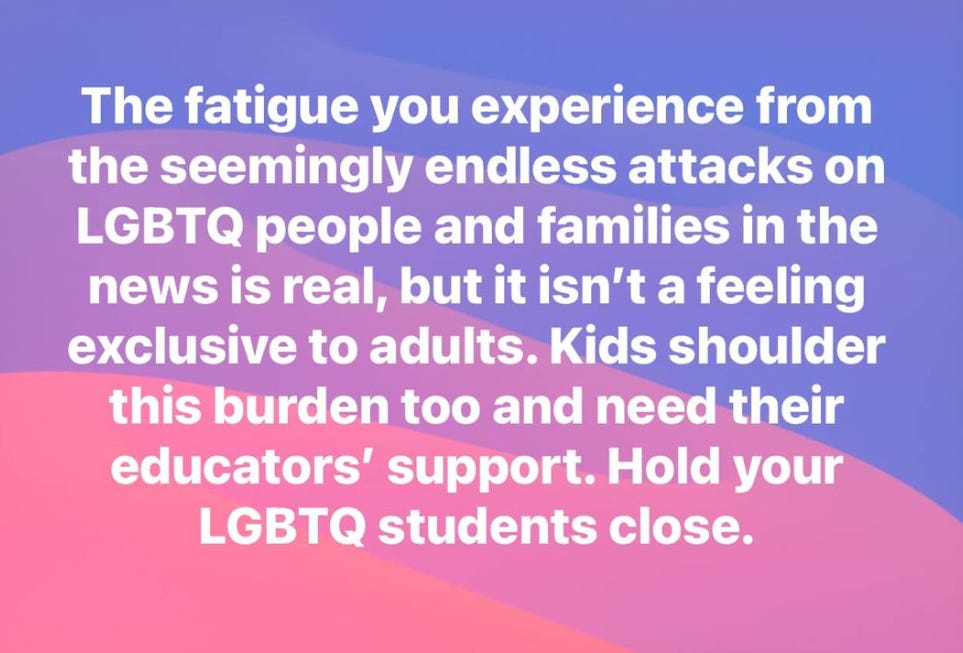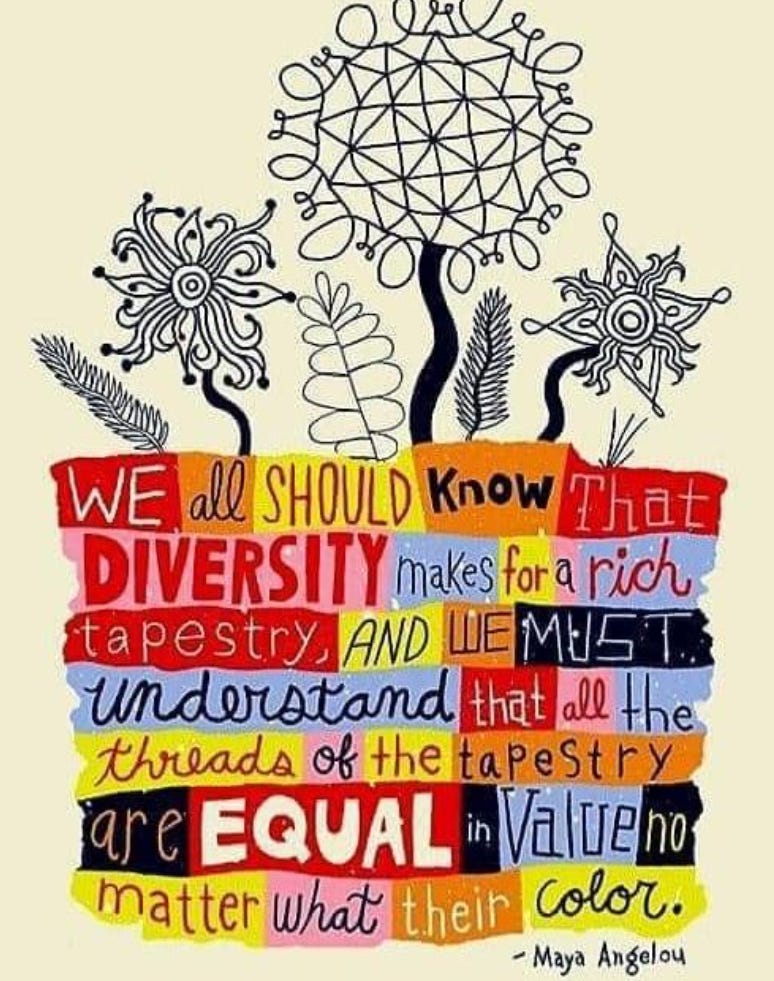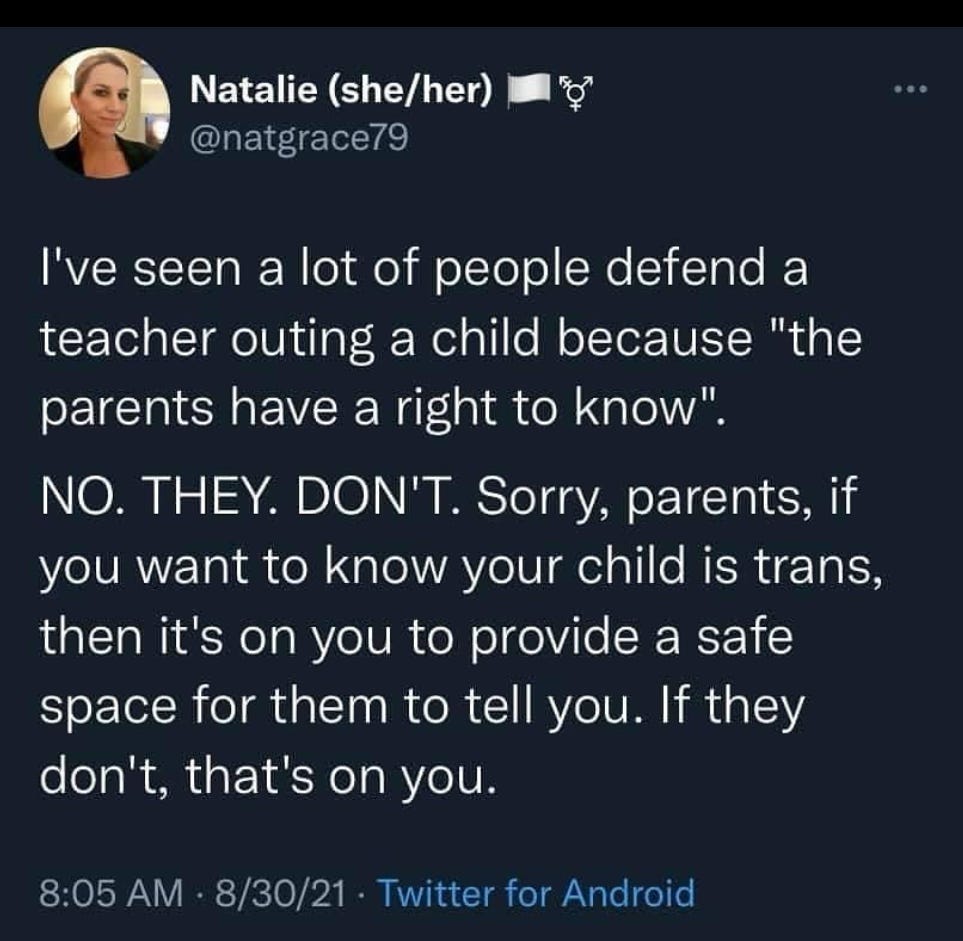Trans 101: Part 9
Part 9 of 11: Role of Education System in Supporting Trans & Non-Binary Kids and Their Families
(Links to Parts 1, 2, 3, 4, 5, 6, 7, and 8)
I’m going to start this post with a sentence I never thought I’d ever have to write, but here it goes: Gender-affirming surgeries are not happening in public schools. Exactly zero surgeries happen in exactly zero public schools. My understanding is that some of the parents rights folks think that this happens, and I just… I… I’m bewildered.
(Where are these surgeries happening, exactly? Biology class, perhaps? Fetal pig dissection with a side of top surgery? Health class? Who is doing these surgeries? How on earth are these sinister “surgeon-teachers” by-passing the legal and ethical boundaries in place in terms of parental/guardian consent? Seriously - school staff can’t even hand out Tylenol to kids with headaches; kids have to go see the school nurse and even then the nurse has to check to make sure that parents have signed a consent form for the child to receive Tylenol. Sigh. Make it make sense.)
Anyhoodle. Now that we’ve gotten *that* out of the way…
One important source of support for trans kids comes from Educators, and Manitoba Education and Training has developed guidelines in a support document to ensure that transgender and gender diverse students have equitable access to all aspects of school life (academic, extracurricular, and social) in ways that preserve and protect their dignity.
In this document, they’ve outlined the ways in which school members (which includes school boards, administrators, educators, staff, parents/guardians, and students) each play an important part in creating and sustaining a safe and supportive school environment for all kids, because public schools should be places where all children feel welcomed and safe.
It’s the responsibility of all school members (the list above) to protect and respect students based on gender identity and gender expression, and it is the responsibility of all school members to adhere to the provisions of The Human Rights Code (Manitoba) to protect the rights of children.
I’m going to let you read through that document on your own, but I wanted to address the fear some people have about schools “forcing” kids to transition or going behind parents’ backs to help kids transition.
First of all, school support around a child’s transitioning only becomes tricky when parents are not supportive of their child.
When parents/guardians are supportive, the school works with the family (in the ways outlined in the document) to facilitate the social transition at school with as much ease and as little fanfare as possible. The impact of a child transitioning will be minor - if not negligible - to the 97-99% of the cisgender student body; it’s not that difficult to learn someone’s name and pronouns, and inviting children to practice acceptance and empathy for someone whose life is different than their own is simply part of learning to be a good citizen and community member, and is one essential aspect of public education.
From what I can tell, the parents rights people oppose having children learn to accept and extend kindness and friendship to the wide diversity of kids and families that exist; they call this “grooming”. As I just said in the paragraph above, this is actually called “being a good citizen” and “loving your neighbour”. Public school is the perfect place to learn to know, enjoy, and care for people who are different from yourself.
As I mentioned above, however, in some cases students will choose to socially transition when their parents/guardians refuse to affirm their gender identity and/or expression.
Here’s an excerpt from the MB. Teacher & Education Document which outlines how schools need to approach this kind of a scenario:
“In these situations, schools must carefully balance the need for parents/guardians to be informed about their child’s experiences with the student’s right to live freely in their affirmed gender.
Confidential information about a student must not be shared even with the parents/guardians without the student’s consent, unless there are overarching safeguarding reasons for sharing the information.
In certain cases, situations may arise at school that make it difficult or impossible for the school to keep the student’s gender status private from the parents/guardians. To respond appropriately to this tension, some schools, in consultation with the student, will work with the student and trained support providers to reveal the child’s gender status formally to the parents/guardians in the relatively safe confines of the school.
Educators should carefully weigh all the potential consequences of such an approach, ideally consulting with and/or working with individuals trained for and familiar with such situations. This approach should also include having support services available in cases where it may not be safe for students to return home after such a revelation.”
I realize that this is potentially distressing to hear/read, but at the end of the day, public education must always act in the best interest of the child and preserve the rights of the child, even if that makes parents uncomfortable. I struggle to understand how any parent could be content having the public school system elevate their personal biases as a parent over the rights of their own child. Doesn’t every parent send their child to public school with the wish and expectation that all school members will act in the best interest of their kid and to preserve the human rights of their child and every child in that building?
And it’s important to remember that this type of potentially awkward situation is not being caused by the school, it’s actually caused by the parents who are unwilling to support and accept their child’s gender identity and exploration. This puts school members in the position of needing to support and care for the well-being of the student to the best of their ability until the child is old enough to make their own medical decisions. Obviously, this is not an ideal situation, but once again, the onus is on the unsupportive parents and not the school.
To clarify and reiterate:
The education system is not driving or influencing any decisions for trans/non-binary students’ transition process; the role of educators is solely that of supporting the decisions that are being made by the child, their parents/guardians, and their medical team (if applicable).
In the absence of parental/guardian involvement or acceptance, it’s up to the school to support the student as best they can, which may look like directing trans/non-binary students to resources that would provide mental and emotional support.
For a young student, this would most likely mean providing time for them to talk to the guidance counselor who would keep an eye out for symptoms of anxiety & depression (which commonly start to develop in early childhood in trans/non-binary children when families are unsupportive).
For a middle years student, this may involve time with a guidance counselor, and giving them the phone number of GDAAY so that the adolescent could have access to specialized mental and emotional support should they choose to reach out. If a child pursues this option, the school is not involved any further.
For a high school student, in addition to time with a guidance counselor, supporting the student could involve directing them to Klinic’s website so they can begin to understand their options going forward once they hit age 16. Once again, if a student chooses to contact Klinic, the school is not involved from that point on.
I think one concern raised from the parents rights rallies was that teachers or counselors were making referrals to clinics specializing in transgender care without telling parents. From what I could glean online, it seems as though teachers/counselors in Calgary and parts of Ontario are able to refer adolescents to trans clinics if parents are not supportive. However, a teacher’s involvement would end there: it would be up to medical personnel to take over from that point on; an educator would not be able to provide any further direction or authorization for treatments, etc.
In Manitoba, however, all of the information I’ve seen shows that referrals to GDAAY can be self-referred or referred by a physician, and Klinic needs a physicians’ referral; educators are not part of that process at all. The most that educators can do is provide emotional support and point a trans/non-binary student to resources that may help them down the road if the student chooses to access them.
And once again, yes, a school can - and should - respond to and support a child’s requests for social transitioning, because the goal is to keep these children alive and functioning as well as possible.
Join me in the next post as we look at the role of Community members (that’s all of us!) in supporting trans & non-binary kids and their families.
~ K.




